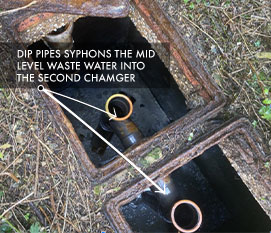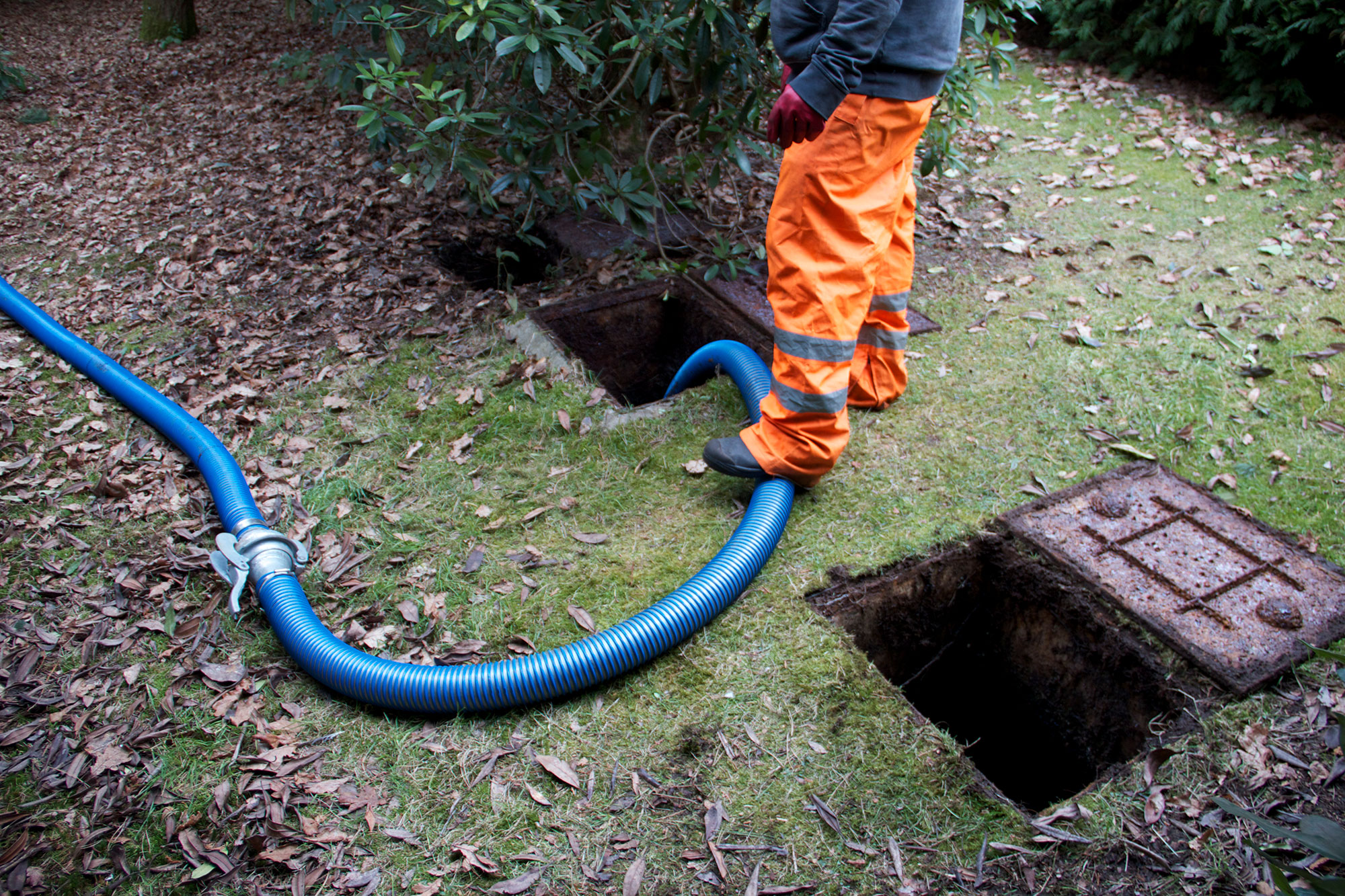How to know when to empty your septic tank
Many of our customers will often own properties in areas that may not be served by main public sewer lines. Instead, these homes or businesses will be served by septic tanks, which need care and regular maintenance in order to keep them in good working condition. This includes all repairs and emptying of your septic system. But how will you know when to empty your septic tank?

Do septic tanks have to be emptied?
It is important that you empty your septic tank. If the tank is not cleaned, the waste inside will start to fill the first chamber, leaving less and less space for solids and liquids to settle and separate.
The solids may also start to thicken, becoming encrusted on the sides of the tank and the dip pipes. If any significant movement takes place in the tank when this happens, it is possible for the crust to become so thick that the dip pipes will break. This will allow fats and floating solids to pass straight through to the soakaway, without being filtered.
How often should I empty my septic tank?
You should be aiming to empty your septic tank regularly, usually at least once a year. However, the size and usage of your septic tank may affect how many times per year your tank will need emptying. For example, a household with one or two residents would not necessarily require as much emptying as a household that holds a family of five or more. As such, it is always best to consult with a professional drainage service as to how many times a year you should empty your septic tank.
Signs your septic tank needs emptying
There are a number of different ways to tell if your septic tank is full. You will know to empty your septic tank if:
- Appliances and fixtures such as toilets and washing machines are draining slowly
- There is pooling water around the tank and drain field
- Sewage is backing up into your property
- You have not had your septic tank emptied in over a year
To learn more about any of the signs that your tank needs to be emptied, contact us today.
What to do when getting your septic tank emptied
When getting your septic tank emptied, it is important to instruct the tanker driver carrying out the work to “de-sludge” the tank as well as remove the wastewater. This means that they will remove the solid effluent, completely clearing the tank.
Often, companies will charge a lower rate for the removal of only the water, but if it's not being de-sludged, the solids would continue to build up, causing problems with your system.
Emptying a septic tank regularly and maintaining its good condition should allow it to run without problems for many years. If you would like us to empty your septic tank for you, please get in touch with us today.
A warning about surface water
If surface water or rainwater is allowed to enter the tank, this can interfere with the separation process. Incoming water from heavy rainfalls or storms can stir up the water already in the tank, ruining any separation that has occurred in the primary settlement chamber.
If you suspect that this may be happening in your system, we highly recommend that you book a CCTV drain survey with us. We will be able to take accurate, detailed pictures of the inside of your pipes to see if there is a problem, using a state-of-the-art, flexible camera. We may also recommend that you test your surface water gullies and downpipes, to see if they are discharging into the foul drainage pipe by accident.
Our case study: cesspits and a full septic tank
Many years ago, it was possible to have a cesspit on your property that was purposefully designed to leak into the ground. Effluent from a toilet could be emptied into the cesspit and it would not need clearing out for many years. This was especially useful in areas which could not be connected to main public sewer systems, such as the countryside.
However, an abundance of water, particularly after heavy rain and storms, could cause cesspits to fill up extremely quickly. Sometimes this would happen within a month, depending on how many people lived on the property. This often caused the water (along with the effluent) to spill out over the ground. To prevent this from happening, septic tanks were introduced.
We empty septic tanks annually and do not recommend that tanks go several years in between having their chambers pumped. In our work as professional drainage engineers, we have come across many systems where this has been the case, including one septic tank which had not been emptied in over ten years.
When we were called to inspect this tank, we found the blockage to be substantial. Using drain rods and high pressure jetting, then adding extra water to the drain, we eventually loosened obstructions which had become solid. They had solidified to the point where gallons of raw sewage had to be helped towards the tank by pushing the mass towards the tank with the drain rods, all the while adding more water to the system. When this happened, raw sewage came up from the pipes, showing that the tank had not been emptied in many months.
There were at least twelve severe blockages in the tank, with all the pipes coming from the building also clogged up by solid masses. These masses were often found to be lumps of fat, as the separation process had been taking place in the pipes rather than in the tank itself. 100% of the waste we found in that system was made up of solid matter, when at most, a household system would be expected to have around 5% solid waste in its system, with the remaining 95% being wastewater. The sewage was also extremely dark in colour, which suggested that there had been sewage water leaking from the drain through open joints or a broken pipe for a very long time.

The processes of a septic tank
Septic tanks work by three processes. These are the initial separation of liquid wastewater from solid effluent, limited bacteriological action and then finally absorption. Tanks should have at least two chambers (or one chamber divided by a separation wall with dip pipes). Effluent and wastewater enter the first tank, where the initial separation of large solids takes place. Fats will also float to the surface at this stage.
As the first chamber will receive waste straight from the drains, the contents of the chamber can become stirred up when new wastewater or effluent enters. This is especially the case if you are emptying a large volume of water into the tank at once, such as the water from a bath. This is why the first chamber is limited to the initial separation process. Effluent will then pass through to the second chamber via the dip pipes. This is a calmer environment, where smaller particles of waste will be able to settle at the bottom of the chamber. This is also where the limited bacteriological breakdown will take place.
After this, separated wastewater will pass along a further dip pipe to the soakaways, where the liquid will be absorbed by the surrounding soil, which is designed to provide supplementary natural filtration.
To learn more about the septic tanks that we offer, please call us today. We will be happy to provide you with more information.
We install, repair and empty septic tanks
We take pride in our work and we consistently aim to provide efficient septic tank emptying services. As such, we offer swift, professional installations of new septic tank models, as well as fast and efficient emptying and maintenance of tanks that are already in place on your property. We will be happy to conduct any repairs that your system needs and can offer expert advice at every stage.
If you are thinking of having a septic tank installed on your property, or if you already have one and require a professional service to help take care of it, from repairs and maintenance to emptying your septic tank, get in touch with us. Our staff are ready and waiting to help.

